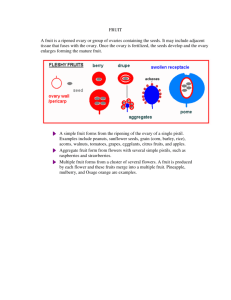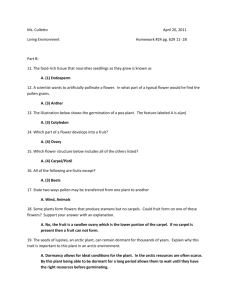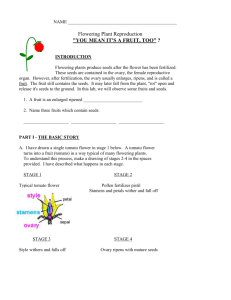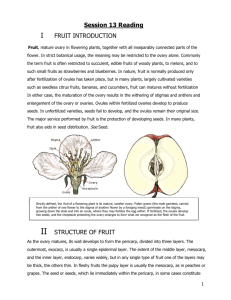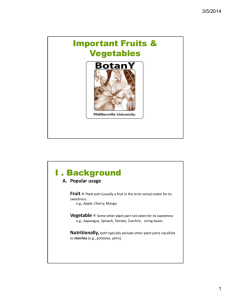Fruits
advertisement
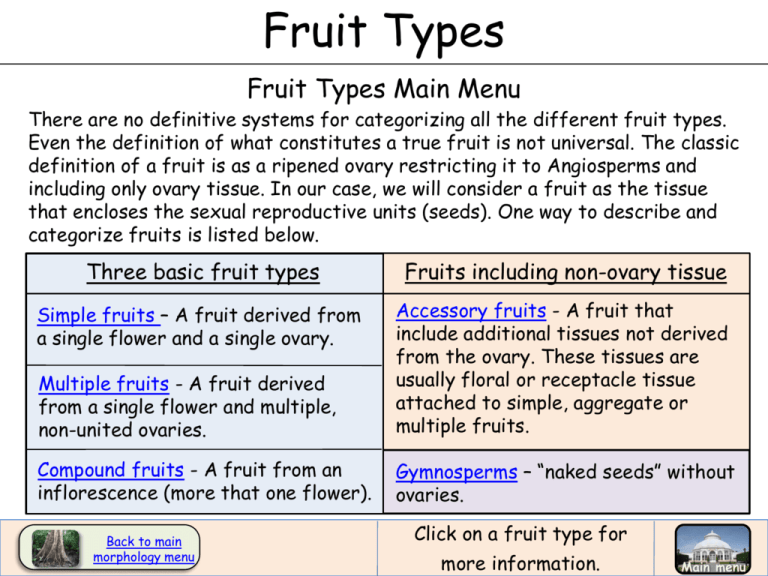
Fruit Types Fruit Types Main Menu There are no definitive systems for categorizing all the different fruit types. Even the definition of what constitutes a true fruit is not universal. The classic definition of a fruit is as a ripened ovary restricting it to Angiosperms and including only ovary tissue. In our case, we will consider a fruit as the tissue that encloses the sexual reproductive units (seeds). One way to describe and categorize fruits is listed below. Three basic fruit types Fruits including non-ovary tissue Simple fruits – A fruit derived from a single flower and a single ovary. Multiple fruits - A fruit derived from a single flower and multiple, non-united ovaries. Accessory fruits - A fruit that include additional tissues not derived from the ovary. These tissues are usually floral or receptacle tissue attached to simple, aggregate or multiple fruits. Compound fruits - A fruit from an inflorescence (more that one flower). Gymnosperms – “naked seeds” without ovaries. Back to main morphology menu Click on a fruit type for more information. Main menu Fruit Types Simple Fruit Menu A simple fruit is derived from a single flower and a single ovary either from a single carpel or an ovary from multiple, united carpels. Simple fruits can be divided into whether they are dry or fleshy at maturity. Dry simple fruits can be further separated based on whether they dehisce (split open) at maturity. Dry fruit types Dehiscent fruits Indehiscent fruits Achene Samara Capsule Follicle Nut Utricle Silique Schizocarp Legume Caryopsis Fleshy fruit types Berry Back to fruit types menu Drupe Click on a fruit type for more information. Pome Back to main morphology menu Main menu
